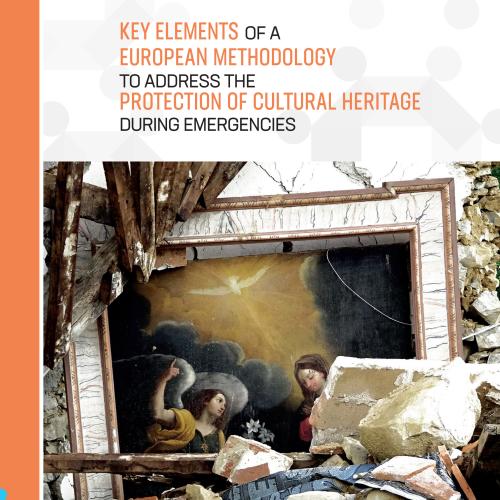The “Key Elements of a European Methodology to Address the Protection of Cultural Heritage during Emergencies”: A shared tool for an effective resilience of disaster-prone cultural heritage
Why a Methodology?
The inclusive consultation process that led to the drafting of the Methodology started with the establishment of national working groups in each partner country, involving all public and private stakeholders in charge of safeguarding cultural heritage in disaster risk management, with the scope of collecting, in a participatory and comparable way, all the resources and practices that the project partners are ready to deploy in case of an emergency abroad to protect cultural heritage at risk of disaster.
Who has contributed?
In December 2019, an international level workshop organized by the experts coming from PROCULTHER project (1) allowed to identify the weak points to work on by each project partner to improve national capacities in the field of Cultural Heritage protection to define the key elements for the elaboration of the Methodology.
Successively, the Partners’ advocacy actions - mainly addressed to EU Member States and UCPM Participating States – extended further thanks to the implementation, in June 2021, of the virtual international workshop “Defining European Technical and Operational Capacities for the Protection of Cultural Heritage at Risk of Disaster”. This event became an opportunity to gain a broader perspective on cultural heritage protection activities undertaken by extra-project stakeholders and to gather more elements for the revision of the document with the nearly 100 experts from over 30 countries (including 18 EU Member States and 4 UCPM Participating States (2), Argentina, the Caribbean region, Israel, Mexico, Palestine, the United Kingdom, and the United States of America), and the 16 speakers from civil protection authorities, ministries, governmental and research institutions including the European Commission Directorates DG ECHO, DG EAC and international organisations, such as UNESCO and ICCROM participating in the workshop.
The Methodology’s goals
The elaboration of the “Key Elements of a European Methodology to Address the Protection of Cultural Heritage during Emergencies” has paved the way for a new era for the enhancement of the European capacities for protecting cultural heritage at risk of disaster.
The Methodology, precisely because of the approach adopted by those who drafted it and as a result of the inclusive process of consultation through which it was drawn up, is intended as living working tool, tested in the field and adapted to contingencies, and finally enhanced by the contributions from disaster risk managers and cultural heritage protection experts eager to join and consolidate the PROCULTHER-NET Community established within the Union Civil Protection Knowledge Network.
(1) The Protecting Cultural Heritage from the Consequences of Disasters – PROCULTHER project was co-funded by the Directorate-General for European Civil Protection and Humanitarian Aid Operations (DG-ECHO) in the framework of the Union Civil Protection Mechanism – UCPM and implemented from January 2019 to December 2021 by a Consortium made of the Italian Presidency of the Council of Ministers- Civil Protection Department (Italy), as coordinator, the Ministère de l’Intérieur - Direction Générale de la Sécurité Civile et de la Gestion des Crises - DGSCGC (France), the Ministry of Culture and Tourism of the Regional Government of Castilla y León - JCyL (Spain), the Ministry of Interior-Disaster and Emergency Management Authority - AFAD (Turkey), the International Centre for the Study of the Preservation and Restoration of Cultural Property - ICCROM and the Fondazione Hallgarten – Franchetti Centro Studi Villa Montesca - FCSVM, with the participation of the UNESCO Regional Bureau for Europe.
(2) In the workshop intervened the following European Member States/UCPM participating States: Belgium, Bulgaria, Croatia, Estonia, France, Germany, Greece, Hungary, Ireland, Italy, Latvia, Luxembourg, Malta, Poland, Portugal, Romania, Slovenia, Spain, Turkey, Montenegro, Norway and Serbia.
